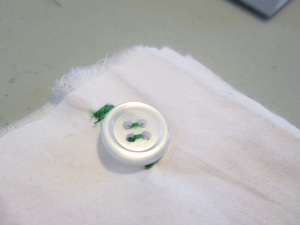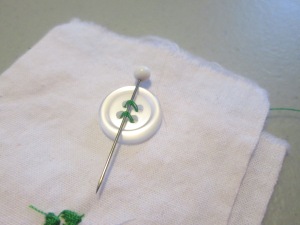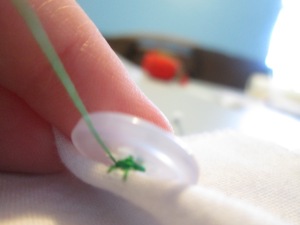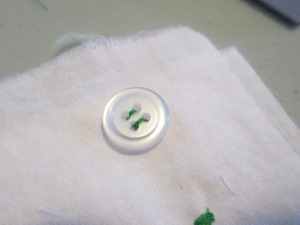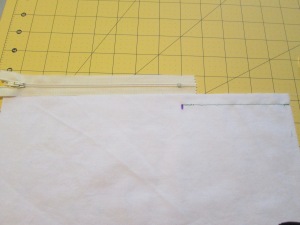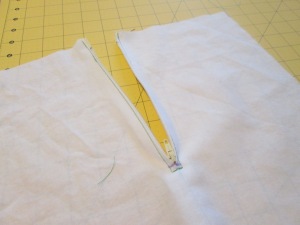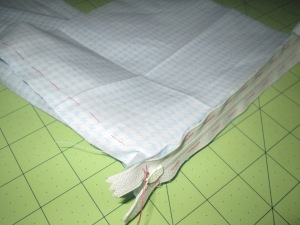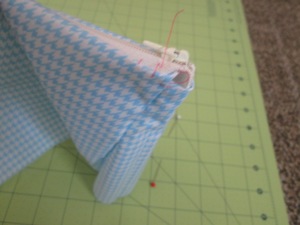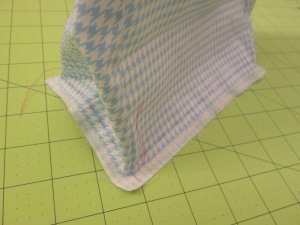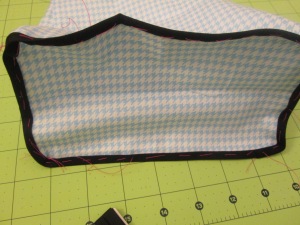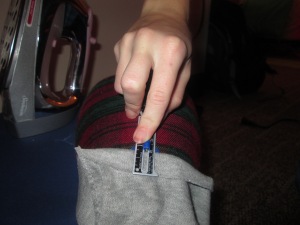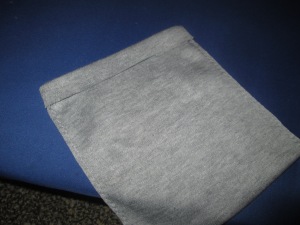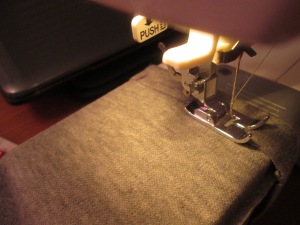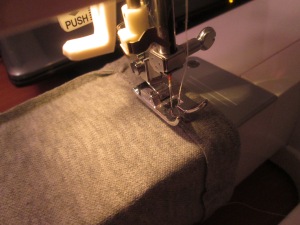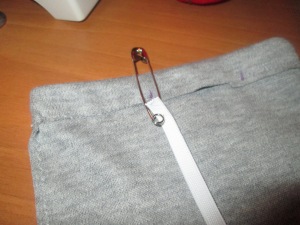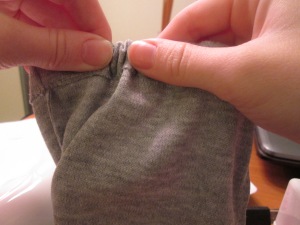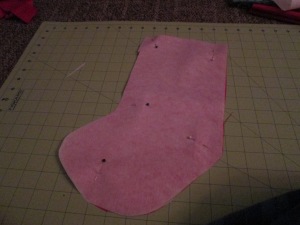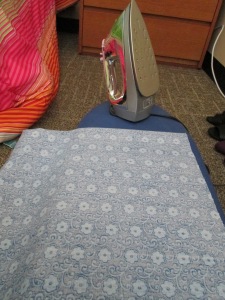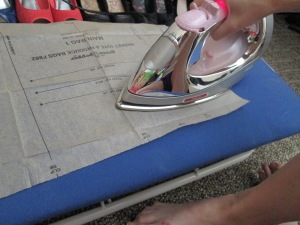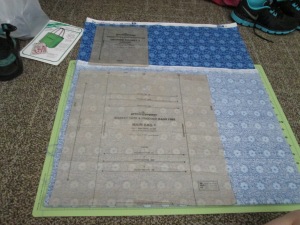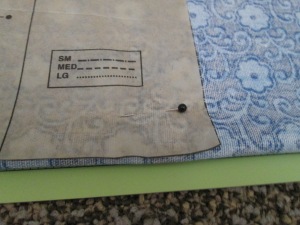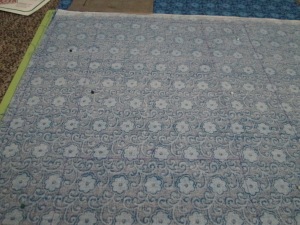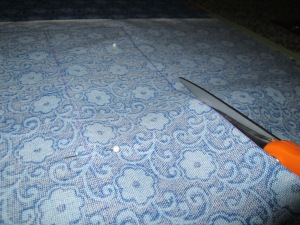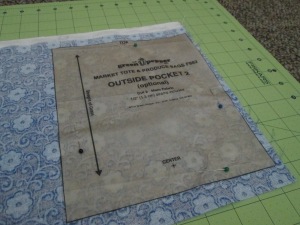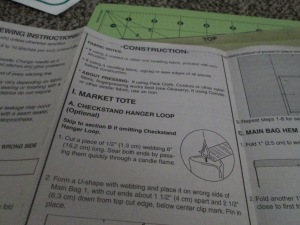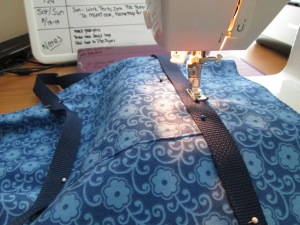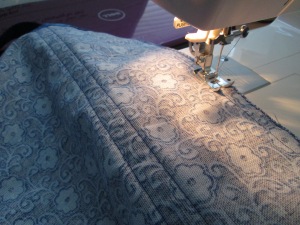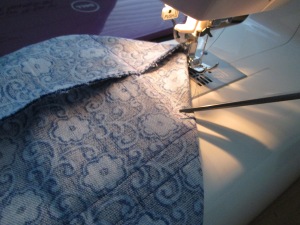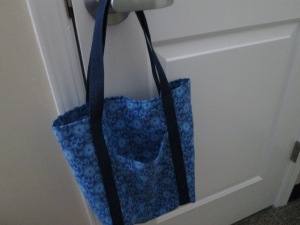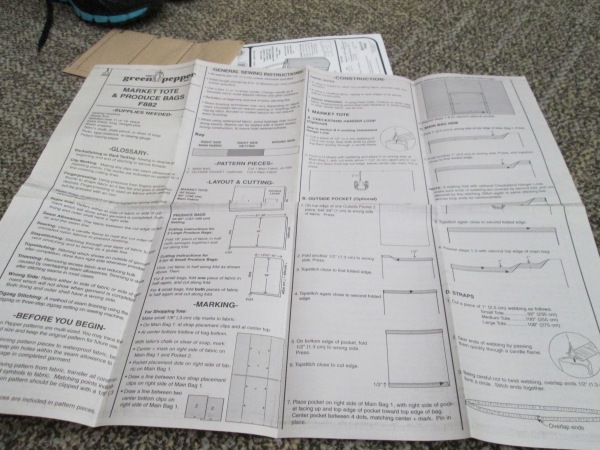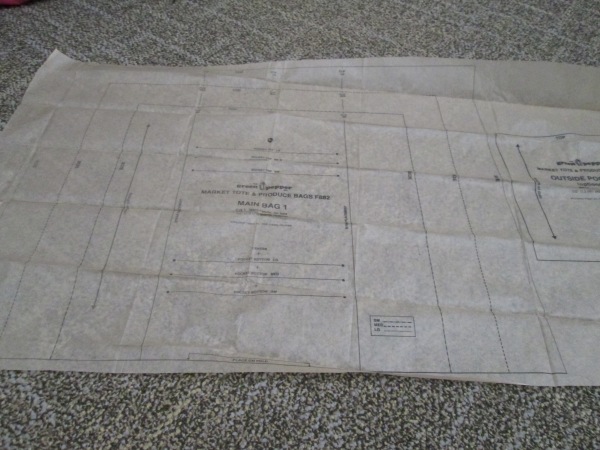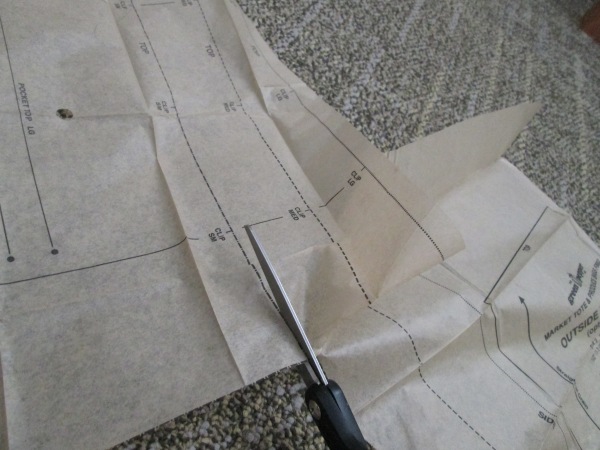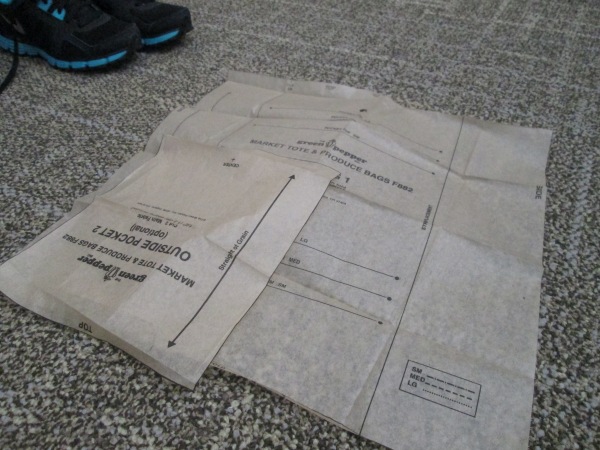In this post, I covered how to sew on a button by hand. But we all know a button is not very useful without a hole for it! So how do you sew a buttonhole?
Many sewing machines come equipped with a buttonhole stitch and foot. If your machine has this function, sewing a buttonhole is as easy as a little set up and pushing the pedal according to your machine’s instructions. If not, there’s still hope for you!
This post will teach you how to sew a buttonhole using a simple zigzag stitch.
First, mark your fabric where the buttonhole will go. The length of the hole should be just slightly longer than the width of the button. I’m using a 5/8″ button, so my hole will be just longer than 5/8″. When you do this on a real craft, you’ll want to use something easily washable like tailor’s chalk, because buttonholes usually show on the finished product. For this demonstration I’m just using a fabric marker.
Next, set up your fabric in your machine with the regular presser foot. It’s wise to use interfacing before you sew a buttonhole to stabilize the fabric, but for this demonstration I’m just using two layers of cotton fabric. Start with the top of the hole below the needle.
Set your machine to a wide zigzag stitch, with a stitch length of 0. Sew a few stitches and then stop.
Adjust your fabric so that the needle is just to the right of the mark. Set your machine to a narrower zigzag stitch with a short stitch length (but longer than 0) and sew the length of the mark.
When you reach the bottom, repeat the wide zigzag stitch used at the top.
Now position your fabric so that the needle is to the left of the mark. Stitch in reverse with a narrow zigzag stitch and a short stitch length.
Now cut your thread and pull the fabric out of the machine. Using a seam ripper and/or small scissors, cut the fabric on the mark. Be careful not to cut the stitches!
Now your buttonhole is ready to go!
Happy sewing!
Learni.st – Learn how to sew starting from step one
Pinterest & Twitter – Follow for tips, ideas, and more
Etsy – Shop Sew Me Your Stuff









